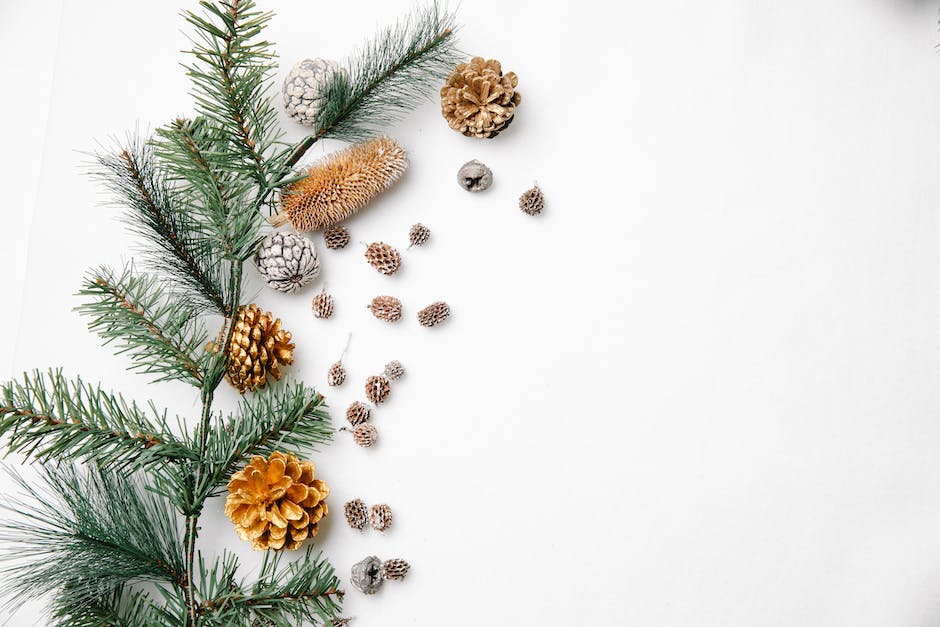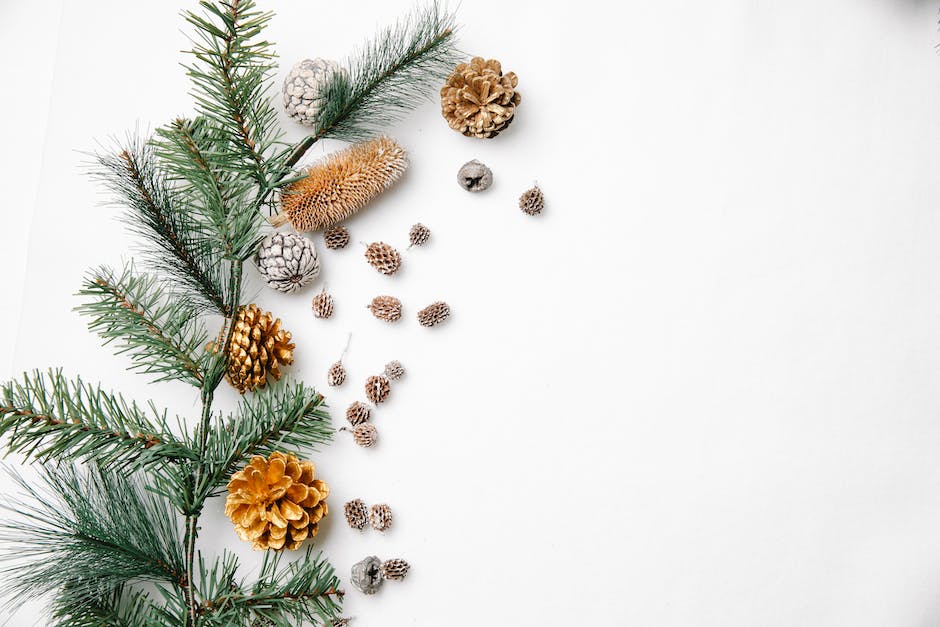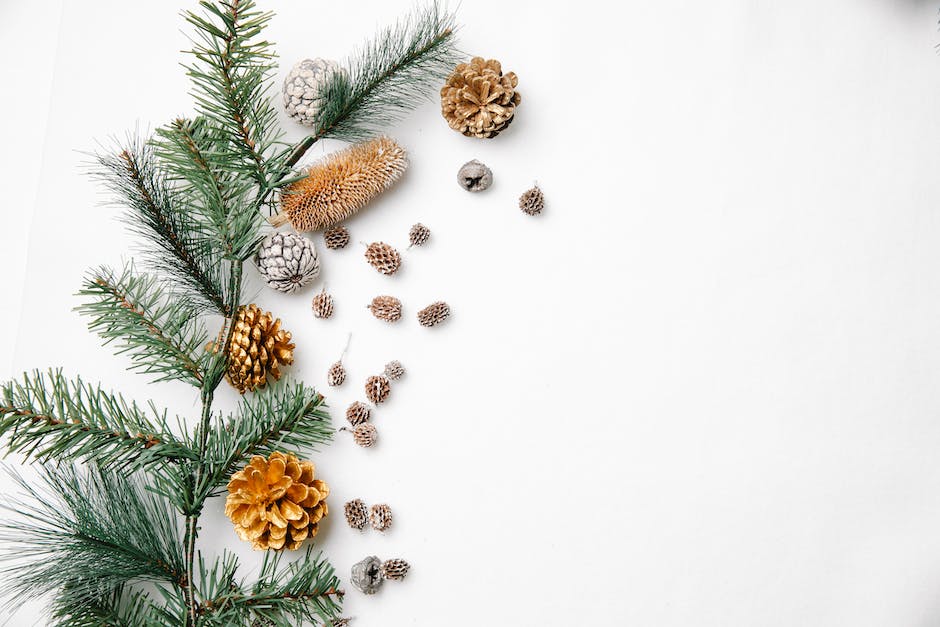Pine tree needles are not the most appetizing looking food, but they can be eaten. They are a good source of Vitamin C, and they can be used to make tea. If you are thinking of eating pine tree needles, make sure to clean them first.
Yes, you can eat pine tree needles, but they are not the most delicious things in the world. If you are in a pinch and need some food, pine tree needles can be a good option. However, most people would not recommend eating them on a regular basis.
What happens if I eat pine needles?
Pine needles can be used in a variety of ways to improve your health. They can be used to soothe sore throats, fight illness and infection, lower blood pressure, improve skin and slow down the aging process. Pine needles are often infused in cocktails and desserts as well.
Pine needles can contain toxic PFAS compounds, according to a study conducted by researchers at North Carolina State University. The study, which was published in the journal Environmental Science & Technology, found that pine needles can act as a “sink” for these compounds, which are commonly used in a variety of consumer products.
While the levels of PFAS compounds found in pine needles are not likely to pose a health risk to humans, the study’s authors say that they could be a concern for animals that consume the needles. The findings highlight the need for further research on the potential risks of PFAS exposure, as well as the need for better regulation of these compounds.
What parts of pine tree are edible
Pine trees are not only beautiful, but also very versatile. Not only can the cambium, needles, and tips be used in food, but pine cones―the young, male ones―are also edible. The male cones are small and soft, in contrast with their tougher female counterparts. Pine cones are a great source of antioxidants and have many health benefits. So next time you’re in the forest, don’t forget to try some of the pine cones!
Pine needle tea is a type of herbal tea made from the needles of certain pine trees. While most pine trees can be used to make this tea, there are some that are poisonous or toxic and should be avoided. These include Lodgepole Pine, Monterey Pine, Ponderosa Pine, Norfolk Pine (Australian Pine), Loblolly Pine, Common Juniper, and Yew. When making pine needle tea, be sure to use only the needles of safe, non-toxic trees to avoid any adverse effects.
Is pine needle tea drinkable?
Pine needle tea is a type of herbal tea that is made from the needles of pine trees. The tea has a mild, pleasant taste and can vary in flavor depending on the type of pine needles used. Some people claim that pine needle tea has health benefits, including boosting the immune system and helping to fight off colds and flu. However, there is no scientific evidence to support these claims.
Pine needle tea is generally considered safe for most people to consume. However, pregnant and nursing women should avoid drinking the tea as it may cause a miscarriage. If you have any concerns, it is best to speak with your healthcare provider before drinking pine needle tea.
Pine needles can be used to make a natural antiseptic that can help the body fight infections. This remedy is high in vitamin C, a powerful antioxidant that can stimulate the immune system, and also contains vitamin A, which is good for the eyes, skin, and hair.
Can you get sick from pine needle tea?
Be careful when handling these varieties of plants as they contain harmful toxins that could cause adverse side effects. There have been reports of irritation in the mouth and throat, inflamed patches on the skin, nausea, vomiting, dizziness, headaches, diarrhoea and more. If you come into contact with these plants, be sure to wash your hands and any other affected areas with soap and water. Seek medical attention if you start to experience any concerning symptoms.
There is some debate on whether or not pine needles are safe to consume. Most pine needles are safe to make tea. However, there are some varieties that contain harmful toxins. There are at least about 20 known toxic varieties of pine trees such as Yew (Taxus), Norfolk Island Pine (Araucana heterophylla), and Ponderosa Pine (Pinus ponderosa). If you are unsure if the pine needles you have are safe to consume, it is best to consult with a healthcare professional or experts on the matter.
Are all pines safe to eat
Seeds from certain pine cones are considered safe for human consumption, while others are not. The Ponderosa Pine, Yellow Pine, Lodgepole Pine, and Norfolk Island Pine are considered unsafe for human consumption due to a lack of information about these species.
Birch trees have a thin outer bark that peels easily, shorter needles and smaller cones. The inner bark of both types of tree is nutritious and perfect as emergency food. Pine trees have chunky thick outer bark, longer needles and cones (of which the seeds are also edible!). Birch trees have a thin outer bark that peels easily, shorter needles and smaller cones.
What are the medicinal uses of pine needles?
Pine needles contain a compound called alpha- or beta-pinene, which is a natural decongestant, anti-inflammatory, antibacterial, antimicrobial, and anxiolytic. When ingested, pine can be used to treat colds and coughs, reducing phlegm and helping with sinus infections.
There are over one hundred species of pine worldwide, and most have recorded medicinal uses Cultures around the globe have used the needles, inner bark, and resin for similar ailments Internally, pine is a traditional remedy for coughs, colds, allergies, and urinary tract and sinus infections. Pine resin is also a popular remedy for toothaches.
Are Christmas tree pine needles poisonous
Poinsettia and Christmas trees are not poisonous if eaten, but may cause mouth/throat irritation, stomach upset, or irritate the skin if handled by children Choking on tree needles is the main concern.
Pine pollen allergies are fairly common and can cause a variety of uncomfortable symptoms. Itchy, tearing eyes, congestion, and a runny nose are all common complaints. If you suffer from pine pollen allergies, it is important to take steps to avoid exposure to the pollen and to treat the symptoms accordingly.
How much caffeine is in pine needle tea?
Pine needle tea is a herbal tea that is naturally caffeine-free. Though more research is needed, it is thought to have a number of benefits due to its high antioxidant content. There are two main types of pine needle tea sold commercially – white and red pine needle.
If you’re looking for a natural way to get better sleep or relieve stress, pine needle tea may be a good option for you. The tea contains melatonin, a natural sleep aid, which can help you feel more relaxed and less stressed, allowing you to sleep soundly. Additionally, pine needles contain properties that help relieve stress by relaxing the mind and body when brewed in hot water and consumed.
Which pine trees are edible
Eastern White Pine and Virginia Pine needles are two of the most popular edible pine trees. You can identify these trees by their long, thin needles. When foraging for these needles, be sure to only collect from areas that have not been treated with chemicals. Once you have collected the needles, you can dry them and then grind them into a powder to use as a flour substitute. You can also use the needles to make a tea.
Pine needles can be used for a variety of things, not just throwing them away! Here are 8 brilliant uses for pine needles:
1. Create fire starters: Bundle a handful of dry needles with thread to use along with kindling wood and newspaper.
2. Use as mulch: Pine needles make great mulch for your plants and gardens.
3. Make a disinfectant: boiling pine needles can create a natural disinfectant.
4. Flavor vinegar: Adding pine needles to vinegar can give it a unique flavor.
5. Brew a footbath: Soak your feet in a pine needle footbath to relax and detox.
6. Cook with them: Yes, you can actually cook with pine needles! They can be used to flavor tea or as a garnish.
7. Freshen up a room: Place a bowl of pine needles in a room to freshen up the air.
8. Fill outdoor pillows:Using pine needles as stuffing in outdoor pillows will help repel insects.
Is pine needle tea FDA approved
Pine needle supplements, including pine needle essential oil and tea, have not been approved by the FDA for medical use. Supplements generally lack solid clinical research. Regulations set manufacturing standards for them but don’t guarantee that they’re safe or effective.
This is good news for foragers, as it means that pine needles can be used as a source of Vitamin C in a pinch. Although the concentration of Vitamin C in pine needles is not as high as in modern supplements or fresh fruit, it is still enough to keep you healthy.
Warp Up
There is no simple answer to this question as it depends on the type of pine tree and the needle in question. Some pine needles are safe to eat, while others are not. In general, the needles of the white pine, red pine, and Douglas fir are considered safe to eat, while those of the yew, hemlock, and spruce are not.
Pine tree needles are not poisonous to humans, so you can technically eat them. However, they are not particularly nutritious and most people wouldn’t enjoy the taste. If you’re looking for something to eat in the wild, there are better options out there.
Jackson Hill is a passionate arborist with years of experience in the field of trees. He developed his fascination with trees at a young age, spending countless hours exploring the forests and climbing trees. Jackson went on to study arboriculture and horticulture at Michigan State University and later earned a degree in forestry from the University of Michigan.
With his extensive knowledge and expertise, Jackson has become a trusted authority on trees and their impact on the environment. His work has helped shape the field of arboriculture and he continues to be a leading voice in the industry.
